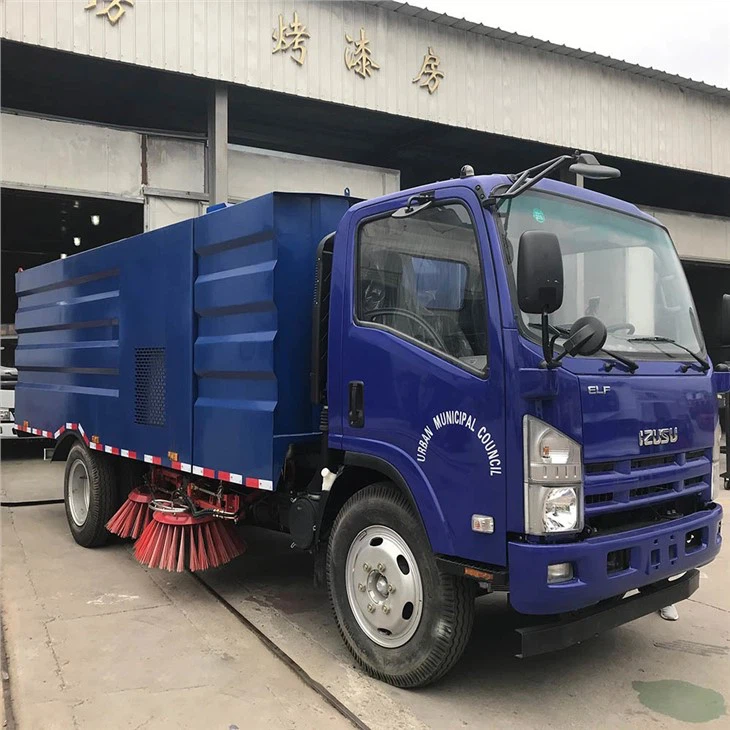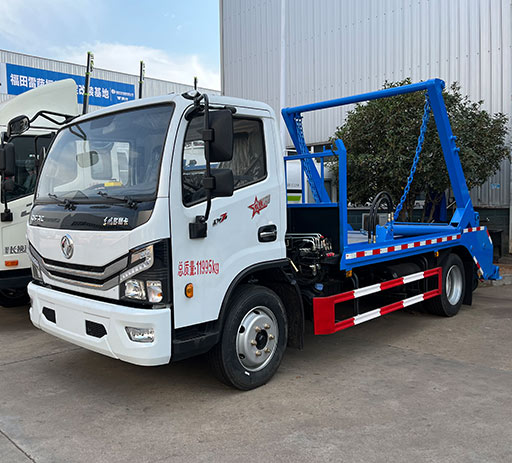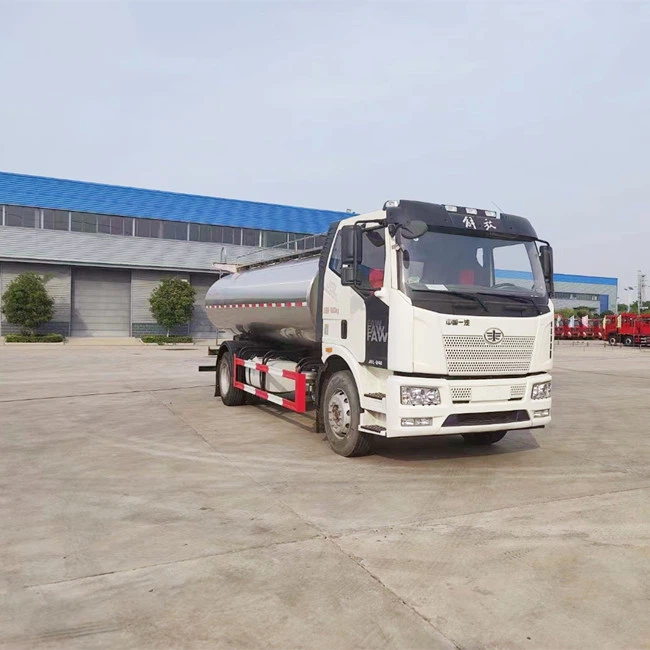Understanding Oil Trucks: The Backbone of the Oil Industry

Oil trucks play a crucial role in the transportation of petroleum and its various products. They are designed to efficiently and safely deliver fuel to different destinations, including gas stations, oil refineries, and industrial facilities. In this article, we will explore various aspects of oil trucks, including their types, construction, operational considerations, maintenance, and safety practices. By the end, you will have a deeper understanding of the oil trucking industry and its significance.
1. Types of Oil Trucks
1.1 Tank Trucks
Tank trucks are specialized vehicles designed specifically for transporting liquids, such as crude oil, gasoline, or diesel. They usually come equipped with a cylindrical tank that is mounted on the chassis.
1.2 Bobtail Trucks

Bobtail trucks are smaller oil trucks that do not have a trailer. These trucks are often used for delivering fuels in urban settings due to their maneuverability.
1.3 Semi-Trailer Trucks
Semi-trailer trucks consist of a tractor unit and a trailer. They can carry larger quantities of oil and are mainly used for long-distance transportation.
1.4 Vacuum Trucks
Vacuum trucks are specialized for transporting viscous fluids and waste products. They can also pump out oil spills or collect liquid waste from various sites.
2. Construction and Design of Oil Trucks
2.1 Materials Used
Oil trucks are typically constructed from materials that can withstand harsh chemical interactions. Common materials include:
- Aluminum: Lightweight yet strong
- Stainless Steel: Offers corrosion resistance
- Carbon Steel: Durable and cost-effective
2.2 Design Features
Some notable design features of oil trucks include:
- Insulation: To maintain temperature
- Valves: For controlling flow
- Distribution System: Ensures even loading and unloading
2.3 Safety Features
Safety is paramount in the design of oil trucks. Key safety features include:

- Flame Arresters: Prevent fires from spreading
- Fenders: Protect against leaks
- Pressure Relief Valves: Prevent explosions due to pressure build-up
3. Operational Considerations for Oil Trucks
3.1 Licensing and Regulations
To operate an oil truck, drivers must obtain specific licenses and adhere to regulations set by transportation authorities. This includes:
– Commercial Driver’s License (CDL)
– Hazardous Materials Endorsement
3.2 Routes and Planning
Effective route planning is essential for oil transport. Factors to consider include:
- Road Restrictions: Check for weight limits and height restrictions
- Traffic Patterns: Avoid peak traffic hours
- Weather Conditions: Plan for inclement weather
3.3 Loading and Unloading Procedures
The loading and unloading process should be carried out with extreme caution to prevent spills and accidents. Typical steps involve:
- Conducting a pre-trip safety inspection.
- Using proper restraints and caps during transportation.
- Following standardized unloading procedures.
4. Maintenance of Oil Trucks
4.1 Regular Inspections
Regular inspections help identify issues before they become serious problems. Key inspection points include:
- Tires: Check for wear and tear
- Brakes: Ensure they function properly
- Tank Integrity: Inspect for leaks
4.2 Scheduled Maintenance
Scheduled maintenance is essential to keep oil trucks running smoothly. Recommended practices include:
- Changing oil and filters regularly
- Testing brakes and steering systems
- Calibrating fuel meters
5. Safety Practices in Oil Transportation
5.1 Driver Training
Training drivers on safety protocols is vital. This includes:
- Safe driving techniques
- Emergency response training
- Understanding hazardous material regulations
5.2 Spill Prevention and Response
Spill prevention strategies include:

- Regular tank inspections
- Using spill containment systems
- Implementing emergency spill response plans
6. Environmental Impact of Oil Trucks
6.1 Emissions and Pollution
Oil trucks can contribute to air pollution through emissions. Solutions to minimize their impact include:
- Using cleaner fuels
- Incorporating emission control technologies
- Regular vehicle maintenance
6.2 Oil Spills and Their Aftermath
Oil spills can have devastating environmental effects. Measures include:
- Emergency training for quick response
- Utilizing environmentally friendly cleanup methods
- Conducting post-incident ecological assessments
7. Industry Trends Affecting Oil Trucks
7.1 Technological Advancements
Emerging technologies are changing the oil trucking industry. Some noteworthy developments include:
- Telematics: For tracking truck performance
- Automated Vehicles: Potential for reducing accidents
- Electric Trucks: As a sustainable alternative
7.2 Market Demand Fluctuations
Market dynamics, influenced by factors like global oil prices and regulations, can impact the oil trucking industry.
8. Practical Tips for Operating Oil Trucks
8.1 Efficient Fuel Use
To maximize fuel efficiency:
- Maintain proper tire pressure
- Limit idling time
- Plan routes efficiently
8.2 Keeping Records
Maintaining accurate records of fuel usage, inspections, and maintenance helps track performance and compliance.
Table: Sample Fuel Efficiency Tracking Sheet
| Date | Vehicle ID | Fuel Used (liters) | Mileage (km) | Efficiency (km/l) |
|---|---|---|---|---|
| 2023-10-01 | OT2023 | 200 | 1500 | 7.5 |
| 2023-10-05 | OT2023 | 250 | 1700 | 6.8 |
9. Innovations in Oil Trucking
9.1 Smart Trucking Solutions
Technological solutions such as GPS tracking and real-time data analytics are helping companies manage their fleets more effectively.
9.2 Sustainable Practices
Many companies are adopting more sustainable practices, focusing on reducing their carbon footprint and improving energy efficiency.
10. The Future of Oil Trucks
10.1 Potential Changes in Regulations
As environmental concerns rise, we expect stricter regulations surrounding emissions and fuel efficiency.
10.2 The Role of Alternative Fuels
With the increasing focus on renewable energy, oil trucks may adapt to include alternative fuels, paving the way for a hybrid future.
FAQ Section
What types of oil are transported in oil trucks?
Oil trucks transport various types of oil, including crude oil, gasoline, diesel, and even hazardous materials.
What training do drivers need to operate oil trucks?
Drivers must obtain a Commercial Driver’s License (CDL) and a Hazardous Materials Endorsement. Safety training on handling fuels and emergency response is also essential.
How frequently should oil trucks be maintained?
Regular maintenance should be conducted based on manufacturer recommendations, typically every few months or after a specific number of miles driven.
What safety measures are required for oil trucking?
Safety measures include proper vehicle inspections, driver training, spill prevention strategies, and compliance with transportation regulations.
How does technology affect oil trucking?
Technology improves efficiencies through telematics for tracking, automated vehicles, and smart systems for route planning and maintenance.
Are there eco-friendly options for oil trucks?
Yes, innovations such as electric trucks and the use of alternative fuels are being developed to create more sustainable oil transportation solutions.
